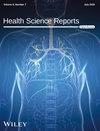Significance of Neurological Manifestations and Their Association With Clinical Outcomes in Hospitalized COVID-19 Patients in Bandar Abbas, Iran: A Cross-Sectional Study
Abstract
Background
Neurological manifestations are increasingly recognized in COVID-19 patients, yet their prevalence and clinical significance remain understudied. This study aimed to determine the incidence and significance of neurological symptoms and their associations with demographic, clinical, and laboratory parameters in hospitalized COVID-19 patients.
Method
A cross-sectional study was conducted at Shahid Mohammadi Hospital, Bandar Abbas, Iran, from February 2020 to February 2021. A total of 540 RT-PCR-confirmed COVID-19 patients were included. Data on demographics, comorbidities, clinical symptoms, neurological manifestations (e.g., myalgia, headache, smell/taste impairment, dizziness), and laboratory findings were collected. Statistical analyses were performed using SPSS version 20.
Results
Myalgia was the most common neurological symptom (33.9%), followed by headache (16.7%), smell/taste impairment (10.2%), and dizziness (6.9%). A significantly higher prevalence of myalgia and smell/taste impairment was observed in patients under 50 years old (p ≤ 0.05). Patients with myalgia also had a significantly higher prevalence of prior chronic heart disease and were more likely to experience concurrent smell/taste impairment (p ≤ 0.05). Notably, while some inflammatory markers were elevated in both patients with and without myalgia and smell/taste impairment, the increase was significantly less pronounced in those exhibiting these neurological symptoms (p ≤ 0.05). Additionally, patients with headache and smell/taste impairment were less frequently admitted to the ICU (p ≤ 0.05). A statistically significant co-occurrence was also observed among the presence of headache, dizziness, and smell/taste impairment in COVID-19 patients (p ≤ 0.05).
Conclusion
Neurological symptoms are prevalent in COVID-19 patients and may serve as markers of disease severity and progression. Recognizing these manifestations can aid in early diagnosis and inform tailored management strategies. Further research with larger, diverse populations and advanced diagnostic tools is needed to validate these findings and better understand the mechanisms underlying COVID-19-related neurological involvement.

 求助内容:
求助内容: 应助结果提醒方式:
应助结果提醒方式:


